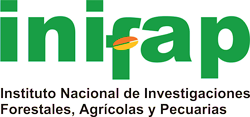Potassium leaching and nutrient content in soil and alfalfa’s response to a dose of vinasse
DOI:
https://doi.org/10.29312/remexca.v3i5.1378Keywords:
Medicago Sativa, electrcity conductivity, lysimeters, pHAbstract
Under greenhouse conditions and based on the concentration of potassium (K+) in the chemical characterization of Vinasse, the effect of different doses (0. 250 y 500 kg ha-1 de K+) was evaluated in the soil, in columns of polyvinyl chloride (PVC), using suction lysimeters at two depths (23 and 46 cm) and samples at the end of the column (75 cm). In Leaching, the K concentration, the effect on pH and the electric conductivity (CE) was evaluated; as the crop indicator, alfalfa was used (Medicago sativa), making 2 cuts in a period of 120 days and applying vinasse at the beginning of the experiment and then again after the first cut. In plant samples, the variables were dry material, NT, B, Ca, Cu, Fe, K, Mg, Mn, Na, P, Zn and NO3 in soil, CE, pH, NH4, NO3, P, K, Na, Ca, Mg, Fe, Cu, Zn Mn abd MO (organic material) was considered. In the statistical analysis of the K dose of 500 kg ha-1 there was an effect on the soil fertility, registering an increase in MO, NH4, P, Ca, Na, Mg, Fe, Cu, Zn, Mn y K. La CE and K. The greatest effect (p< 0.05), was in 10cm of soil. In leached soil, the effect (p< 0.05) was at a depth of 23 cm for both applications of vinasse. The pH did not show changes (p< 0.05), with the application of vinasse. In plant tissue, the nutrients that increased (p< 0.05) were for P= 1939.2 and Zn= 28.63 mg kg-1 for the dose of 500 kg ha-1, with respect to the control, P= 1025.2 and Zn= 14.17 mg kg-1 respectively. For the former, the use of Vinasse as an in input of plant nutrition is recommended.
Downloads
Downloads
Published
How to Cite
Issue
Section
License
The authors who publish in Revista Mexicana de Ciencias Agrícolas accept the following conditions:
In accordance with copyright laws, Revista Mexicana de Ciencias Agrícolas recognizes and respects the authors’ moral right and ownership of property rights which will be transferred to the journal for dissemination in open access. Invariably, all the authors have to sign a letter of transfer of property rights and of originality of the article to Instituto Nacional de Investigaciones Forestales, Agrícolas y Pecuarias (INIFAP) [National Institute of Forestry, Agricultural and Livestock Research]. The author(s) must pay a fee for the reception of articles before proceeding to editorial review.
All the texts published by Revista Mexicana de Ciencias Agrícolas —with no exception— are distributed under a Creative Commons License Attribution-NonCommercial 4.0 International (CC BY-NC 4.0), which allows third parties to use the publication as long as the work’s authorship and its first publication in this journal are mentioned.
The author(s) can enter into independent and additional contractual agreements for the nonexclusive distribution of the version of the article published in Revista Mexicana de Ciencias Agrícolas (for example include it into an institutional repository or publish it in a book) as long as it is clearly and explicitly indicated that the work was published for the first time in Revista Mexicana de Ciencias Agrícolas.
For all the above, the authors shall send the Letter-transfer of Property Rights for the first publication duly filled in and signed by the author(s). This form must be sent as a PDF file to: revista_atm@yahoo.com.mx; cienciasagricola@inifap.gob.mx; remexca2017@gmail.
This work is licensed under a Creative Commons Attribution-Noncommercial 4.0 International license.



